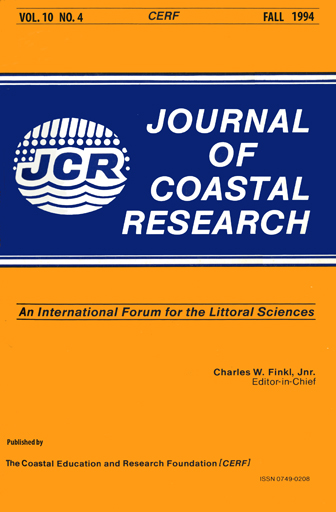Historic Evolution of a Marsh Island: Bloodsworth Island, Maryland
Keywords:
Sea-level rise, Chesapeake Bay, coastal wetlands, inundation, coastal erosion, GIS, pendingAbstract
High rates of relative sea-level rise in the Chesapeake Bay of about 0.3 m/century has caused rapid land loss of the Bay islands. This study is the first quantitative analysis of both perimeter and interior land loss for one of the large marsh islands - Bloodsworth Island. A geographical information system (GIS) was used for the analysis at a resolution of about 16 meters. From 1849 to 1992, the area of Bloodsworth Island declined by 579 ha, or 26% of the land area in 1849. The land loss can be divided into four geomorphic types: perimeter land 1088, channel widening, channel pending, and non-channel ponding. Perimeter land loss is largest at 3.0 ha/yr from 1942 to 1992, but the three interior land loss types are also significant, totalling 1.6 ha/yr from 1942 to 1992. Channel ponding and widening were responsible for nearly all interior land loss prior to 1942. The initial formation of non-channel ponds is attributed to a short-term acceleration in sea-level rise (to 7 mm/yr from 1930 to 1948). Subsequently, non-channel ponding has been significant, particularly in the southeastern quadrant of the island. Compared to the mainland marshes, interior land 1086 has occurred at much slower fates; this is probably due to the low thickness of the marsh deposits on Bloodsworth. To date, bombing appears to have only had a secondary impact on land loss at the scale of this study. In the future, the island appears increasingly vulnerable to interior break-up, particularly given another short-term acceleration of sea-level rise.


